2012年秋学期新教材外研版七年级英语上册复习课件全册(含语法讲解和精选习题)
- 格式:wps
- 大小:219.50 KB
- 文档页数:22
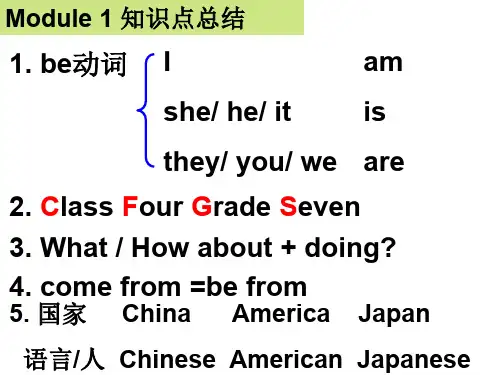

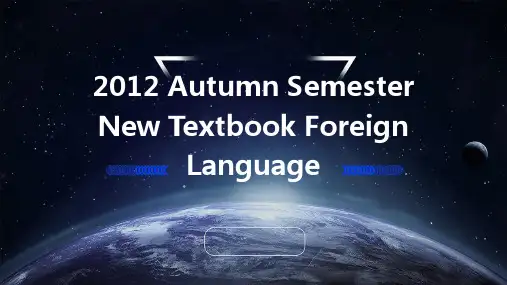
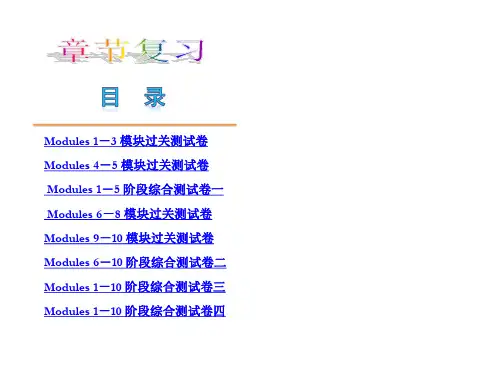
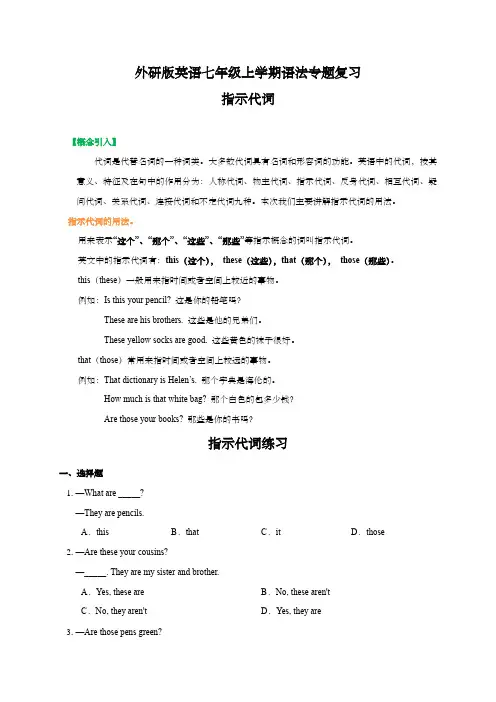
外研版英语七年级上学期语法专题复习指示代词【概念引入】代词是代替名词的一种词类。
大多数代词具有名词和形容词的功能。
英语中的代词,按其意义、特征及在句中的作用分为:人称代词、物主代词、指示代词、反身代词、相互代词、疑问代词、关系代词、连接代词和不定代词九种。
本次我们主要讲解指示代词的用法。
指示代词的用法。
用来表示“这个”、“那个”、“这些”、“那些”等指示概念的词叫指示代词。
英文中的指示代词有:this(这个),these(这些),that(那个),those(那些)。
this(these)一般用来指时间或者空间上较近的事物。
例如:Is this your pencil? 这是你的铅笔吗?These are his brothers. 这些是他的兄弟们。
These yellow socks are good. 这些黄色的袜子很好。
that(those)常用来指时间或者空间上较远的事物。
例如:That dictionary is Helen’s. 那个字典是海伦的。
How much is that white bag? 那个白色的包多少钱?Are those your books? 那些是你的书吗?指示代词练习一、选择题1.—What are _____?—They are pencils.A.this B.that C.it D.those2.—Are these your cousins?—_____. They are my sister and brother.A.Yes, these are B.No, these aren'tC.No, they aren't D.Yes, they are3.—Are those pens green?—_____. They're black.A.Yes, those are B.Yes, they areC.No, they aren't D.No, those aren't4.—Are those your parents?—_____. They are my uncle and aunt.A.Yes, they are B.No, they aren'tC.Yes, those are D.No, those aren't5.Look! _____ are my brothers, Jack and Bob.A.It B.These C.This D.That 6.—Mom, _____ my friend Jack.—Hi, Jack. Nice to meet you.A.she is B.this is C.that is D.he is 7.—_____ Mrs Wang speaking?—Yes, _____ Mrs Wang.A.Is this; I am B.Are you; I amC.Is that; this is D.Are you; this is8.—Is that Danny Brown speaking?—Yes. _____?A.What's your name B.Who are youC.Who's that9.—Look! What's _____ in the sky (天空)?—It's a bird.A.this B.that C.it D.those 10.Jim, _____ my sister Mary and _____ my parents.A.this is; that's B.these are; those areC.this is; these are D.these are; this is11.—Is _____ your family photo?—Yes, it is. And _____ are my sisters.A.this; this B.these; these C.these; this D.this; these 12.—Are _____ your parents?—Yes, _____ are.A.this; they B.that; it C.these; they D.these; these 13.—Are these your brothers?— .A.Yes, these are B.No, these areC.Yes, they aren't D.No, they aren't14._____ are my parents. _____ work in an office.A.These; They B.This; He C.They; It15.—Are your ?一Yes, they are.A.these; notebook B.this; notebooksC.those; notebooks D.that; notebook16.Mum, _____ my friends, Dale and Helen.A.this is B.he is C.these are17.—Are those her erasers?—_____.A.Yes, those are B.No, it isn'tC.No, they aren't18.—Jane, _____ is my brother, David.—Nice to meet you.A.this B.that C.he D.it19.Hello, Kate. _____ my friend, Helen.A.It's B.This's C.She's D.This is 20.Are _____ Lucy's _____?A.this; pens B.that; pen C.these; pens D.those; pen 21.—How much are _____ shoes?—_____ are 180 yuan.A.this; They B.this; It C.these; They D.these; It 22.—Tom, what's this in English?—_____.A.This is pen B.It's a pen C.It's pen D.Pens 23.—Are your brothers?—No, aren't. They are TFBOYS.A.this; it B.these; those C.these; they D.they; them 24.—Look! What's _____ in the sky?—It looks like a kite.A.that B.this C.these D.those 25.—How much are _____ shorts?—They're twenty-two _____.A.those; dollar B.those; dollars C.that; dollar D.that; dollars26.—Are those your grandparents?—_____.A.Yes, these are B.No, those aren'tC.Yes, they are D.No, these aren't27.—Are _____ my _____?—No, they aren't.A.these, books B.that, bookC.those, book28._____ my brother and _____ my sister.A.This's; that is B.This's; that's C.this is; that is D.This is; that's 29.—Eric, look at this picture. Are _____ two boys your brothers?—Yes, _____ my brothers, Alan and Mike.A.these; they B.these; these areC.those; they are D.those; those are30.—Is this your pencil?—_____. My pencil is in my schoolbag.A.Yes, it is B.Yes, this is C.No, it isn't D.No, this isn't 31.—what are _____ in English?—Bananas.A.this B.that C.those32.—What are those?—_____ are cakes (蛋糕).A.That B.These C.They33.—Is _____ your pen?—Yes, _____ is.A.this, that B.that, this C.that, it34.—Is this his eraser?—_____.A.Yes, this is B.Yes, it isn't C.Yes, it is35.Tom, _____ is my father. Dad, _____ is my friend Tom.A.this; this B.this; that C.that; that D.that; this二、填空题36.(this) two girls are my sister and my cousin.37.Those are orange carrots.(改单数)orange carrot.38.Those are orange bags. (变为单数句子)orange bag.39.Is this your brother's key? (变为复数句)your brother's keys?40.This is my ruler. (改为复数句)my rulers.41.Jane, are (that) your sisters?42.Are these your parents?(作否定回答)No, .43.Those are oranges. (改为单数句)orange.44.Those are my cousins. (改为否定句)my cousins.45.Those are some English books. (改为单数句)English book.答案一、选择题1. 【答案】D【解析】考查代词的用法。
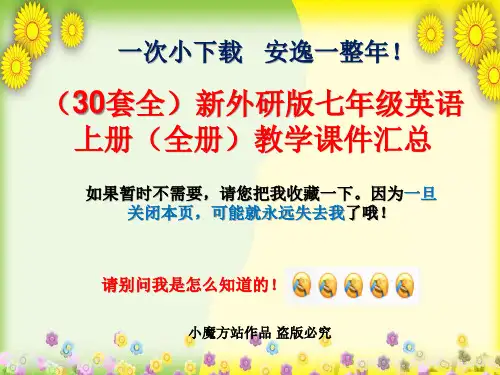
![[中考英语]2012版中考复习精品课件英语外研版(含11真题)第二讲 七年级上 Modules6~1](https://uimg.taocdn.com/c5e81d146fdb6f1aff00bed5b9f3f90f76c64db1.webp)

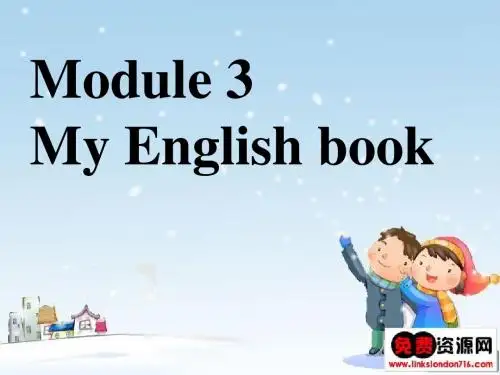
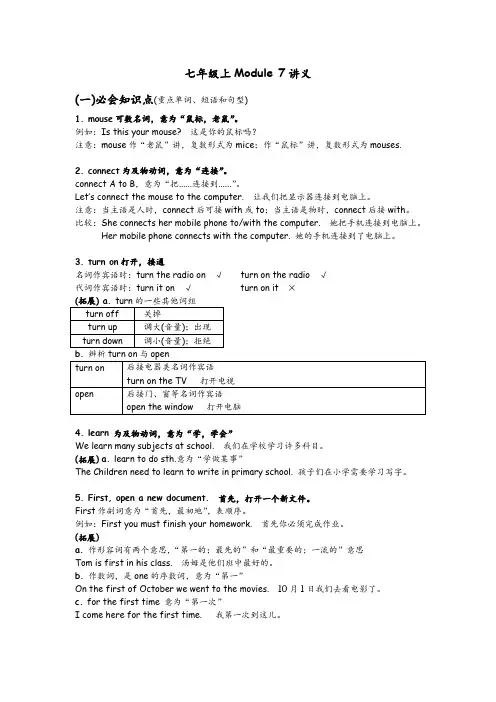
七年级上Module 7讲义(一)必会知识点(重点单词、短语和句型)1. mouse可数名词,意为“鼠标,老鼠”。
例如:Is this your mouse? 这是你的鼠标吗?注意:mouse作“老鼠”讲,复数形式为mice;作“鼠标”讲,复数形式为mouses.2. connect为及物动词,意为“连接”。
connect A to B,意为“把......连接到......”。
Let’s connect the mouse to the computer. 让我们把显示器连接到电脑上。
注意:当主语是人时,connect后可接with或to;当主语是物时,connect后接with。
比较:She connects her mobile phone to/with the computer. 她把手机连接到电脑上。
Her mobile phone connects with the computer. 她的手机连接到了电脑上。
3. turn on打开,接通名词作宾语时:turn the radio on √turn on the radio √代词作宾语时:turn it on √turn on it ×(拓展) a. turn的一些其他词组b.辨析turn on与open4. learn 为及物动词,意为“学,学会”We learn many subjects at school. 我们在学校学习许多科目。
(拓展)a. learn to do sth.意为“学做某事”The Children need to learn to write in primary school. 孩子们在小学需要学习写字。
5. First, open a new document. 首先,打开一个新文件。
First作副词意为“首先,最初地”,表顺序。
例如:First you must finish your homework. 首先你必须完成作业。
M1_M3┃易错点针对训练┃( )3.—What are these?—______are books.A.It B.They C.There D.We[答案] B 考查对主语为these/ those问句的回答,答语中用they代指问句中的these 或those。
例如:( )—Are these your books?—No,________.A.these aren't B.these are C.they aren't D.they are( )—What are those?—________flowers.A.That is B.These are C.They're D. It's[答案] (1)C (2)C( )7.—Are there_________ pens in the picture?—Yes,there are ________.A.some; any B.some; some C.any; some D.any; one[答案] C 考查some和any的用法。
一般情况下,some用于肯定句,any用于否定句和疑问句。
例如:( )There ________pencils on the desk.A.is any B.is some C.are any D.are some( )I can't see ________ birds in the tree.A.some B.A C.an D.Any( )9.Tom and I ________good friends.A.am B.Is C.are D./[答案] C 考查be(am, is, are)动词的用法。
口诀:我用am你用are,is紧跟他、她、它,其他人称都用are。
例如:( )—Are you Peter?—________.A.Yes, I not B.Yes, I am C.No, I'm D.Yes, I'm not( )Daming ________ a student.A.am B.Is C.are D.be( ) My name ________Paul.What ________your name?A.is; are B.am; is C.is; is D.are; are[答案] (5)B (6)B (7)C( )10.—________ my friend, Tony.—Hello, Tony.A.It is B.They are C.This is D.She is[答案] C 考查当向第三人介绍某人时,用指示代词this或these,不用she/ he/ they。
例如:( )Mum, ________are my good friends.A.this B.That C.these D.It[答案] C┃模块语法┃一、人称代词用来代替人的代词称作人称代词。
人称代词又分为主格和宾格两种。
如下表:人称单数复数主格宾格主格宾格第一人称I me we us第二人称you you you you第三人称he him they themshe herit it1.人称代词主格:在句子中作主语的代词。
(1)主格在句中作主语,常置于句首。
例如:I am in Class Two. 我在二班。
He is twelve years old. 他今年12岁了。
(2)多个人称代词连用时的排列顺序是:①单数:第二人称(you)+第三人称(he/she/it)+第一人称(I),例如:You,he and I are students.我、你和他都是学生。
②复数:第一人称(we)+第二人称(you)+第三人称(they),例如:We and they are from Hainan. 我们和他们来自海南。
③名词与代词混用:名词+人称代词,例如:Miss Yang and he are good friends. 他和杨老师是朋友。
④主动承认错误时,第一人称在前,例如:I and John made the teacher angry.我和约翰惹老师生气了。
2.人称代词宾格:在句中作宾语的代词。
(1)宾格在句中作宾语,常放在动词或介词后。
例如:He is a good boy and we like him.他是一个好孩子,我们都很喜欢他。
(2)人称代词的宾格在口语中也能作表语。
例如:—Who broke the vase? 谁打碎了花瓶?—Me. 我。
(Me.=It's me.)二、动词be的一般现在时1.am, is, are是动词be的一般现在时形式,基本意思为“是”,用来说明某人的年龄、身份、身体状况等,在英语中起着非常重要的作用。
一般现在时的基本用法归纳如下:(1)肯定句式为:主语+am/is/are+其他,例如:I am a student.我是一名学生。
He's a doctor. 他是一位医生。
It's a desk. 它是一张桌子。
They are my friends. 他们是我的朋友。
(2)动词be的否定式就是在其后加not,且可以缩写为“isn't, aren't”,其中am与not 不能缩写。
例如:He is not a teacher.→He isn't a teacher.他不是一名教师。
You are not Chinese.→You aren't Chinese.你们不是中国人。
I'm not your friend. 我不是你的朋友。
(3)be动词的一般疑问式是把be动词提至句首,第一个字母要大写,句末用问号。
肯定回答为“Yes,主语+be”,否定回答为“No,主语+be not”。
例如:—Is this a map? 这是一张地图吗?—Yes, it is.是的,它是。
—Are they from Xinjiang?他们来自新疆吗?—No, they aren't.不,他们不是。
注意:它们的用法随人称和数的不同而变化,可记住下列口诀,避免出错。
“我(I)用am,你(you)用are, is 连接他(he)、她(she)、它(it)。
单数词用is,复数词全用are。
”2.在一般现在时的表达中关于动词be的常用句式:(1)be+形容词,例如:I am very happy. 我很幸福。
The fruit is very nice.这水果很新鲜。
(2)be+名词,例如:Mr Wang is our English teacher.王先生是我们的英语老师。
They are our friends. 他们是我们的朋友。
(3)be+介词短语(in,on…),例如:The book is on the desk. 书在桌子上。
Are they from America? 他们来自美国吗?(4)be+形容词短语,例如:He is only four years old. 他只有四岁。
(5)be+副词,例如:Class is over.下课了。
Module 2一、指示代词this,that,these,those的用法this,that,these,those四个词都是指示代词,分别表示“这个”,“那个”,“这些”,“那些”。
1.this 用来指离说话者位置近的人或者物,以及时间上较近的场合。
例如:This is my mother.这是我妈妈。
2.that用来指在空间或时间上离的较远的人、物和场合。
例如:That is my father. 那是我爸爸。
3.these是this的复数形式,those是that的复数形式。
this,that和is连用,而these,those和are连用。
this is,these are,those are不存在缩写形式,只有that is有缩写形式,即that's。
例如:These are my friends. 这些是我的朋友。
Those are their aunts. 那些是他们的姑姑。
That's his father.= That is his father. 那是他父亲。
指示代词的一般疑问句形式直接将be动词提前到句首,把第一人称转换为第二人称,回答用yes或no。
而在回答主语为this,that,these,those的疑问句时,问句中的this,that在答语中要用it替代,these,those要用they替代。
例如:—Is this his father?—Yes, it is. / No, it isn't.—Are these your friends?—Yes, they are. / No, they aren't.二、名词所有格本模块出现了一些这样的短语:Daming's mother,Tony's father 等,英语中这种“名词+'s”表示后面的名词与这个名词是所属关系,被称为名词所有格。
1.名词所有格的构成:(1)一般情况下名词词尾加“'s”,表示“……的”。
例如:Mary's mother 玛丽的妈妈。
(2)若名词词尾已有s,只加“'”。
例如:the teachers' office 老师们的办公室。
(3)在不以s 或es结尾的复数名词后,加“'s”构成所有格。
例如:Children's Day儿童节。
(4)表示无生命物体的所有格,要用of。
例如:a map of China 一张中国地图。
(5)表示时间、距离的名词,所有格也由词尾加“'s”构成。
例如:today's newspaper 今天的报纸。
2.使用名词所有格应注意的问题:(1)如果两个名词并列,并且分别有“'s”,则表示“分别所有”;只有一个“'s”,则表示“共有”。
例如:John's and Mary's rooms(表示两个房间),John and Mary's room(表示一个房间)。
(2)在表示店铺、医生诊所或教堂、某人的家时,名词所有格的后面常常不出现它所修饰的名词。
例如:the barber's理发店,at Uncle Wang's 在王叔叔家。
Module 3there be 句型结构1.结构陈述:there be 句型表示某处有某人或某物。
常用结构为:there is/are +某人/某物+地点状语。
例如:There is a computer on the desk.桌子上有一台电脑。